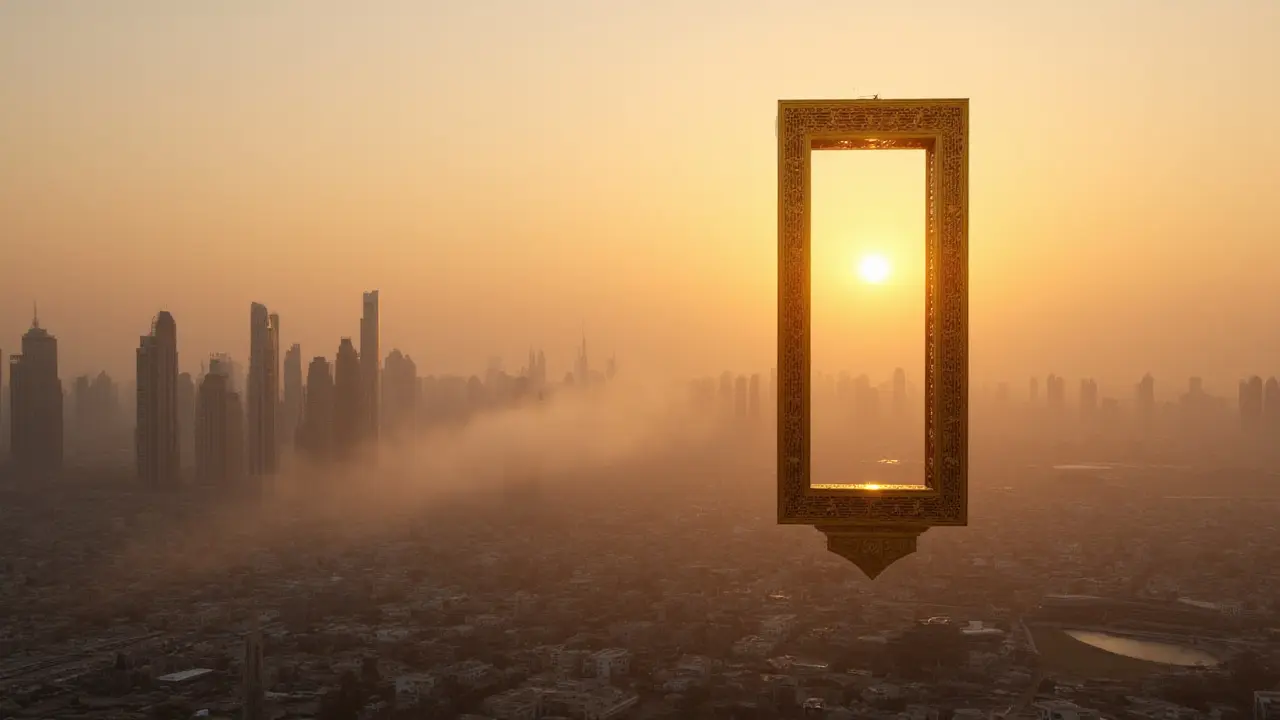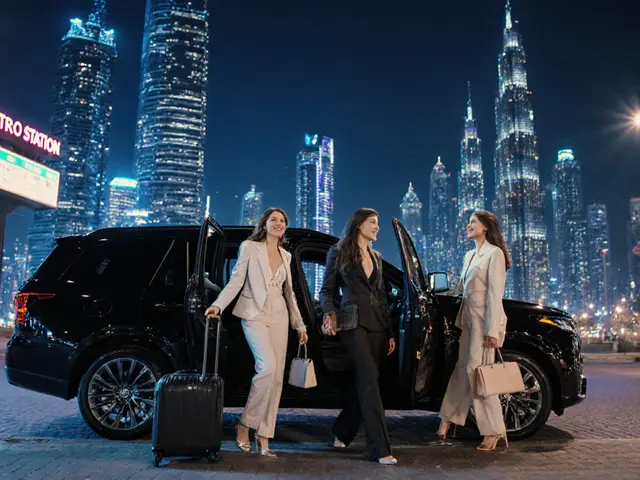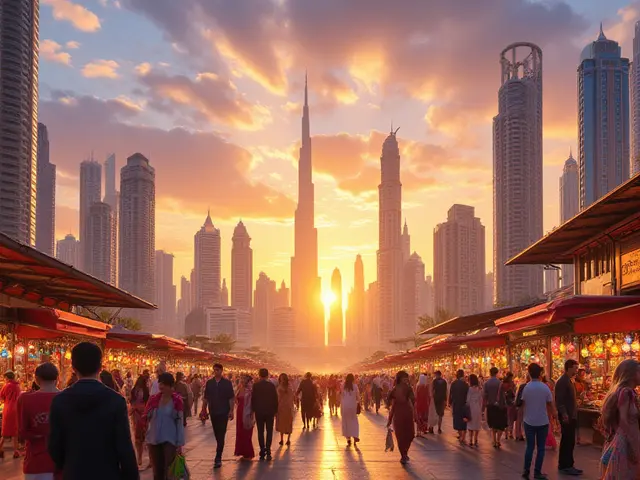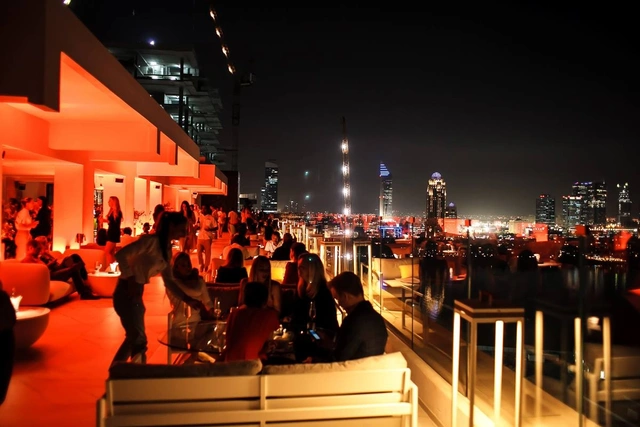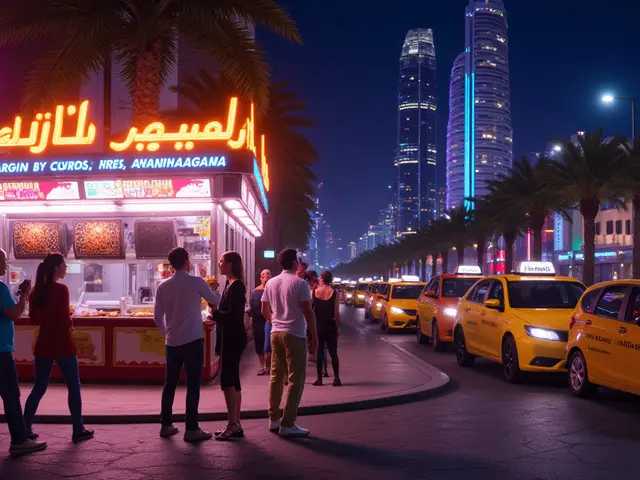If you think buildings are just big boxes for people, the Dubai Frame is here to seriously mess with your head. Here’s a structure that riffs on your expectations—no tilt, no curve, just a glorious, upright photo frame so massive it stretches across Dubai’s skyline, looking like it’s waiting for Instagram to turn up in person. It’s gleaming gold, wild in scale, and when you stand underneath it, you can’t help but wonder how it doesn’t just tip over in the desert wind. Sometimes, the best way to see a city is through a bold design experiment—and Dubai Frame makes you feel like you’ve stepped into someone’s futuristic daydream, one that literally frames the old and new city in a single look.
Key Features of the Dubai Frame
The Dubai Frame isn’t just iconic because of how it looks. Here’s what sets it apart:
- It’s huge—about 150 meters tall (roughly 50 stories), and 93 meters wide. That’s taller than the Statue of Liberty if you stuck it on top of the Eiffel Tower’s base.
- It bridges Dubai’s old and new neighborhoods, so you get a literal window into the past and future of the city.
- The golden cladding? It isn’t just for flexing. The pattern mimics the Expo 2020 Dubai logo, tying the building to the city’s global ambitions.
- The top deck panics a lot of people—thanks, glass-floored observation walkway. You see the city, and then you see straight down, and the effect is wild.
- The Frame holds exhibits and offers multimedia experiences, giving you history, science, and a shot of Dubai’s vision for the future in one trip.
- It took almost a decade of design, planning, and construction to pull off, officially opening in January 2018.
High noon is when you’ll get the best photos—brilliant reflections, dramatic shadows, and almost dizzying clarity (if your knees aren’t shaking as you walk across the glass).
Direct Answer: Why Is Dubai Frame an Architectural Feat That Defies Gravity?
Why does the Dubai Frame get called a marvel? First off, most buildings don’t try to look like a giant rectangle with nothing in the middle. Functionally, it’s more of a high-tech bridge than a normal skyscraper—but standing tall and open like that is tough work, especially in Dubai’s strong desert winds. Clever engineers used two vertical towers and a horizontal skybridge, linking them rigidly with steel and reinforced concrete. There are no columns in the middle, so when you step onto the bridge—93 meters long, remember!—you’re relying on invisible feats of geometry, internal truss structures, and steel like you’d see on major suspension bridges. It resists twisting and bending so guests feel safe. They tested it with crazy loads; the structure can withstand more than 40,000 tons of force. Want a number to brag about? At any given time, the Frame could comfortably hold about 2,000 people up top—which is almost twice the occupancy of the average A380 airliner, minus the pretzels and coffee spills.
Comprehensive Guide to Visiting the Dubai Frame
Curious about what it’s actually like? When you arrive, most visitors are hit by two things: the gold cladding (hello, bling) and the perfect symmetry. You can enter from either side, with the ground floor decked out in multimedia exhibits showing Dubai’s transformation from fishing village to global metropolis. If you love a good timeline, this is your spot. Remy, my kid, loves the interactive screens—he raced Ziggy in a game that guesses which Dubai animals survived the desert heat. It’s fun, not stuffy.
Elevators are glass-walled and shoot you up in just 75 seconds. You pop out feeling like you’re inside a cloud, landing at the panoramic skydeck. To the north, you spot old Dubai: low-rise homes, ancient souks, a smattering of minarets. Spin south for modern Dubai: skyscrapers, futuristic highways, the snaking line of Sheikh Zayed Road, and—yep, another world-famous building—Burj Khalifa. It’s not just a viewpoint. The Frame’s windows act like a timeline, one side dedicated to where Dubai has been, the other to where it’s going.
Keep an eye out for special events. Sometimes, the Frame hosts VR history tours, art shows, or even sunrise yoga. They do a great job making sure you’re not just snapping selfies—it’s about soaking up the city from a fresh angle.
You can grab souvenirs at the shop below (plenty of Frame-shaped keyrings and Dubai mugs). Kids under 3 go free, and the Frame is very accessible—there are ramps, clear signs, and helpful guides everywhere. If you’re bringing a bigger group, book ahead; weekends can get crowded fast.
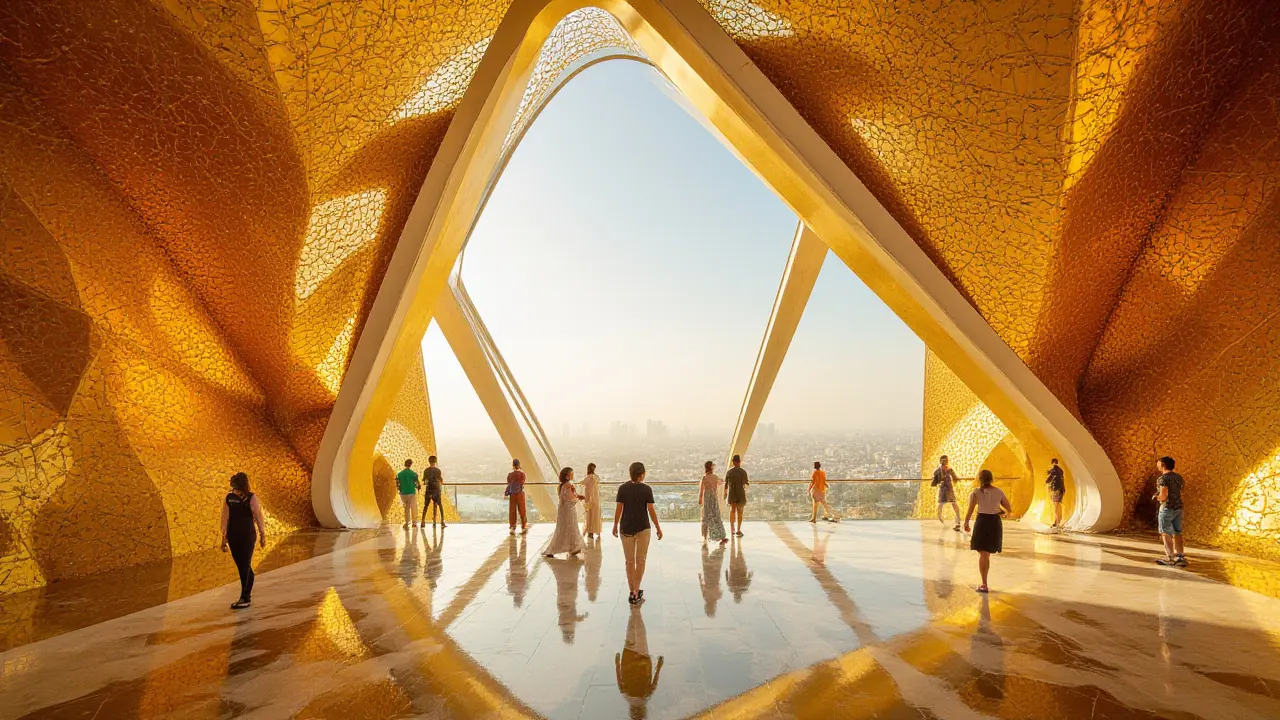
Definition and Context: What Makes the Dubai Frame Unique?
How do you explain the Dubai Frame to someone who’s never seen it? Call it a door. Call it a time portal. What it really does is capture Dubai’s obsession with boundary-pushing architecture. Sheikh Mohammed bin Rashid Al Maktoum, Dubai’s ruler, wanted a landmark that felt fresh but tied into the city’s DNA. So, the architecture firm Fernando Donis won an international competition by ignoring pyramids and domes and going with the simple, instantly recognizable outline of a giant frame.
The golden color comes from aluminum plates with titanium nitrate coating. Not only does it look good under the blazing sun, but it’s also eco-friendly and highly resistant to corrosion—essential for something standing in Dubai’s humid air. As for the inside, everything feels seamless and tech-driven. The elevators, for example, are state-of-the-art, with floor-to-ceiling glass. This isn’t just an observation deck—it’s storytelling you walk through. From below, the Dubai Frame glows at night thanks to 2,000 individually controlled LED fixtures. There’s almost an art installation feel to the whole thing.
Want the hard numbers? Take a look at this snapshot:
| Feature | Dubai Frame |
|---|---|
| Height | 150 meters |
| Width | 93 meters |
| Materials | Steel, reinforced concrete, glass, aluminum |
| Opened | January 2018 |
| Visitors in 2024 | Over 2.5 million |
Frankly, there’s nothing else quite like it—and you’ll notice that the rest of Dubai’s skyline is dotted with copycats, but none pull off the blend of simplicity and wow-factor like the Frame.
Visiting Tips, Tickets, and the Best Time to Go
Thinking about checking it out? Right now (as of 2025), a regular adult ticket is around AED 50. Kids between 3–12 go for AED 20. Under 3s? Free (Remy was pretty smug about that). You can book tickets on the official website, through hotel concierges, or with trusted travel apps. Try to book early for weekends because it fills up quickly with families and big tour groups.
Morning and late afternoon are prime times—less crowded, and you’ll catch Dubai bathed in amazing light. The Frame opens by 9 AM and shuts at 9 PM every day. If you’re a photography nerd, go just before sunset for golden hour magic. Crushing on night views? The city lights look spectacular after dark and there’s something surreal about seeing car headlights stream below while you’re walking on glass 150 meters up.
The Frame is right at Zabeel Park, so you get two attractions for one trip. There are loads of playgrounds, food trucks, and shaded places to chill if you’re wrangling kids (or jealous of their energy). Need a coffee fix after tromping around? You’ll find plenty of cafes nearby. Keep in mind: peak summer (June–August), the outside gets hot enough to fry an egg on the sidewalk, so stick to early morning or evening visits if you’re not a lizard.
- Bring a camera with a wide lens if you have one—the structure is huge, and it’s tricky to fit in a tight selfie.
- No big bags or pets allowed up top (sorry, Ziggy had to stay home—he’s not a fan of heights anyway).
- Dress light in the daytime, but bring a thin layer for air-conditioned spaces; Dubai loves its chilly AC.
- The floors, especially the glass bridge, are super clean but can get slippery—grippy shoes help.
If you want a quiet moment, skip the shop and head to the back garden, where you’ll find benches and the best angles for whole-Frame photos. Some of Remy’s favorite snapshots came from back there—he still calls it the “golden picnic ground.”
Fun Facts, Engineering Secrets, and Frame vs. Other Dubai Attractions
Here’s a fact to blow your mind: if you laid the Dubai Frame flat, it would cover almost two soccer fields. And the amount of concrete in the structure? Enough to build several city blocks. The glass bridge on top has smart sensors to detect wind, temperature, and vibration, so you’re always safe—even if it sways a bit (which is totally normal for tall bridges like this, don’t worry). During storms or the odd sandstorm, the Frame can be closed temporarily—they don’t take chances with weather.
If you love comparing icons, here’s a side-by-side:
| Feature | Dubai Frame | Burj Khalifa |
|---|---|---|
| Height | 150m | 828m |
| Shape | Rectangular Frame | Tapering Spire |
| Main Attraction | Observation bridge, panoramic views | World’s tallest building, sky-high lounge |
| Visitor Flow | 2.5M/year | Over 3M/year |
| Fear Factor | Glass floor skybridge | Dizzying elevators |
| Photo Op | Frames old and new Dubai | City-wide views from above |
The Dubai Frame isn’t trying to compete vertically; it’s about perspective. Instead of simply climbing the highest point, you’re standing exactly where the past meets the future—architecturally, literally, and in every Instagram shot you take.
Want to impress friends or visiting family? Tell them about the time a sandstorm swept through and the Frame’s LED lights shifted to a calming blue, visible for miles and acting as a beacon for lost drivers—that story always scores points.
Whether you’re into bold architecture, chasing the best city views, or just want to tick off another Dubai curiosity, the Frame is a hands-down must-see. Don’t forget to spot the reflection of old souks alongside the mirrored towers—one monumental frame, one wild city, and a memory that never really fades.
